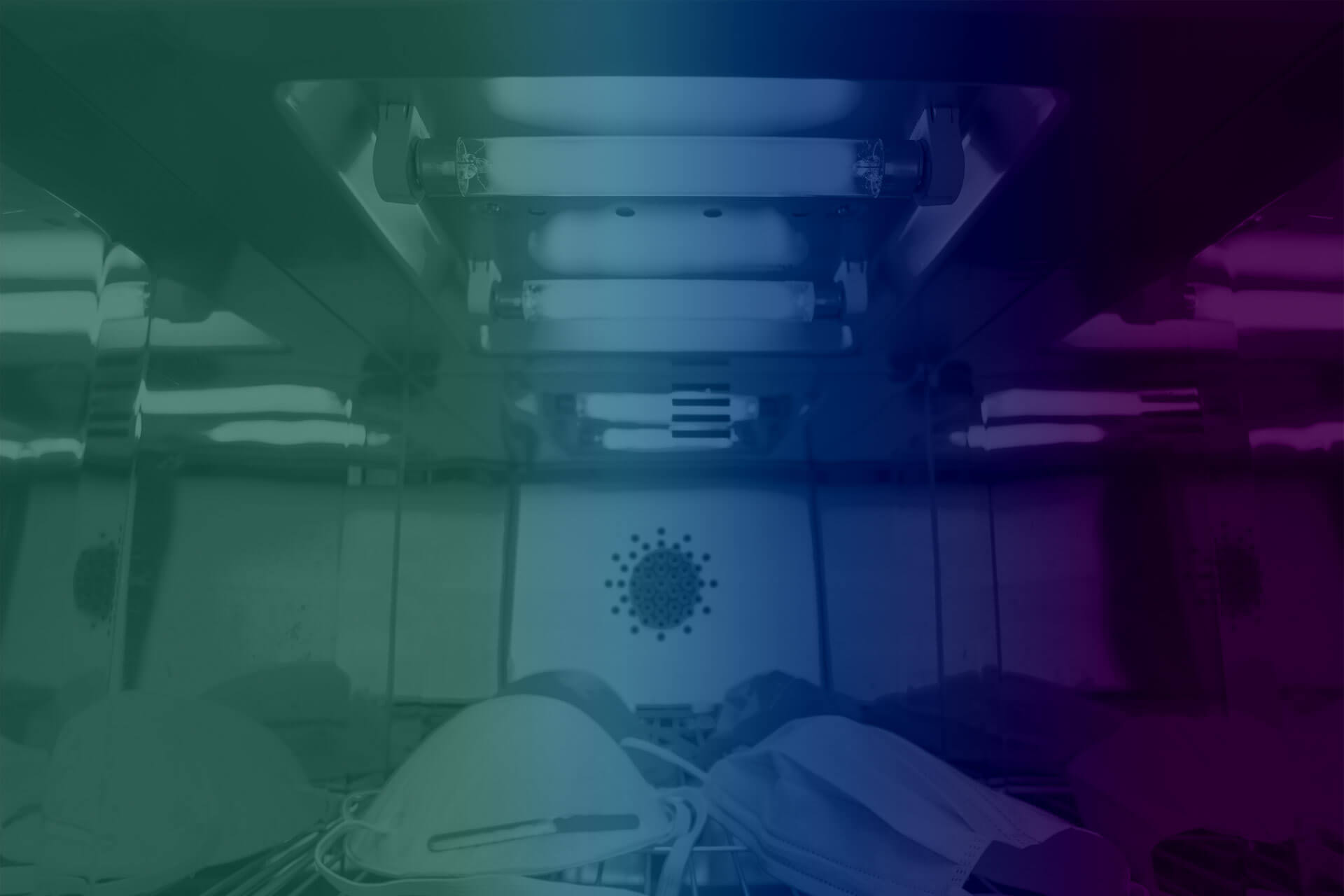The coronavirus pandemic has driven innovation and improved disinfection in all hospital areas.
One of the immediate consequences of COVID-19 has been the intensification of cleaning and disinfection measures in hospitals, especially in critical areas.
Cleaning and disinfecting the surfaces of health centers has been and continues to be a great effort. Especially considering that virus germs can survive in any area of a hospital.
Therefore, as the global ravages of the coronavirus persist, it is vital to seek solutions that minimize the risk of infection while allowing hospitals to continue operating at full capacity.
Prioritizing the cleaning of patient rooms with contact precautions, redoubling efforts to clean and disinfect areas and equipment, is necessary, but not sufficient. And to go one step further, disinfection robots are here to stay.
How do robots help overcome the pandemic?
Robotic systems have taken a very important step forward as guarantors of being technology for the disinfection of COVID-19 in critical hospital areas.
Although until now they were commonly used to clean hospitals without risk and for tasks such as controlling social distance, in recent months their help has become essential for disinfection of the virus in hospitals, as well as the need to better plan and design hospitals from the future.
“Cleaning, transport and company robots have become great allies to combat the pandemic.”
All, being able to apply the main coronavirus disinfection technologies, such as ozone, short wave ultraviolet rays and UVC light, plasma ionizers, hydrogen peroxide and HEPA filters.
These systems promise much safer hospital environments, both for patients and for all health personnel. Hence, the pandemic has focused on more innovative and effective products, never forgetting the fantastic cleaning staff who have worked tirelessly in healthcare facilities.
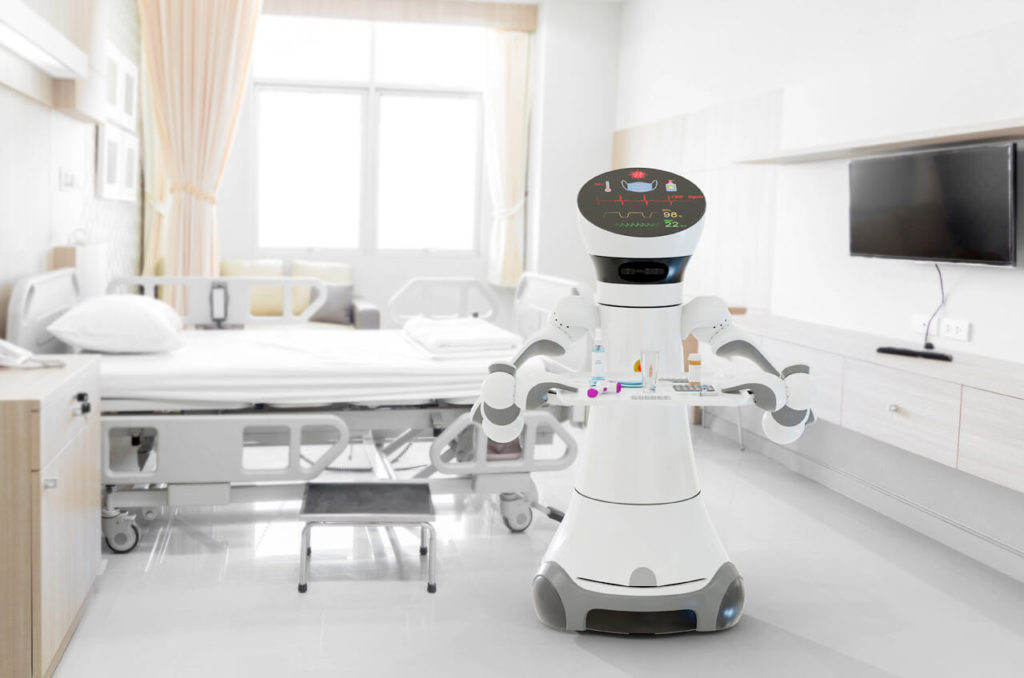
UVC technologies
Every millimeter of every corner of every healthcare center counts in the fight against COVID-19. The ease of transmission and adherence to certain materials have turned the disinfection work into a titanic battle that could not be renounced under any circumstances. It is in this context that UVC ultraviolet light technology comes into play, which kills any microorganism safely, quickly and efficiently.
Materialized in devices, during the pandemic hospitals have relied on germicidal ultraviolet irradiation lamps (UVGI) to destroy both DNA and RNA. Thus, UVC germicidal energy penetrates the cell membrane of microorganisms, irreparably damaging their DNA. An environmental intervention that reduces the spread by contact and the transmission of infectious agents (such as bacteria and viruses) through the air.
A successful complement to traditional space sterilization techniques such as hydrogen peroxide and gas or steam bottles. Due to the speed with which they act, they are especially effective in disinfecting operating rooms between operations. In addition, its management can be done remotely.
Disinfection technology to destroy COVID-19
The great protagonist in terms of robotization of hospitals for the pandemic is called Xenex. And it is that robots that interact with patients or that bring them food, this vital device has been added in the last year and a half to disinfect different spaces.
Xemex, a Texas company, is the first ultraviolet light disinfection technology capable of destroying COVID. Thanks to the use of LightStrike disinfection technology, it achieves an effective reduction of coronavirus contamination in clinical settings quickly, in as little as five minutes.
In addition, this disinfection robot was the first disinfection technology that uses pulsed ultraviolet light (UVC) capable of destroying, 99.99% and in just two minutes, the dreaded SARS-CoV-2 virus that causes a pandemic. This technology was validated months ago by the CSIC itself through the Biosafety Service of the National Center for Biotechnology (CNB).
Its operation is simple: it has a powerful, full-spectrum type C ultraviolet light source that increases germicidal efficiency and reduces bacterial load.
The disinfection guarantees it offers are not trivial, given that COVID-19 disinfection technology in critical hospital areas has been one of the great workhorses of all healthcare systems since the end of 2019.
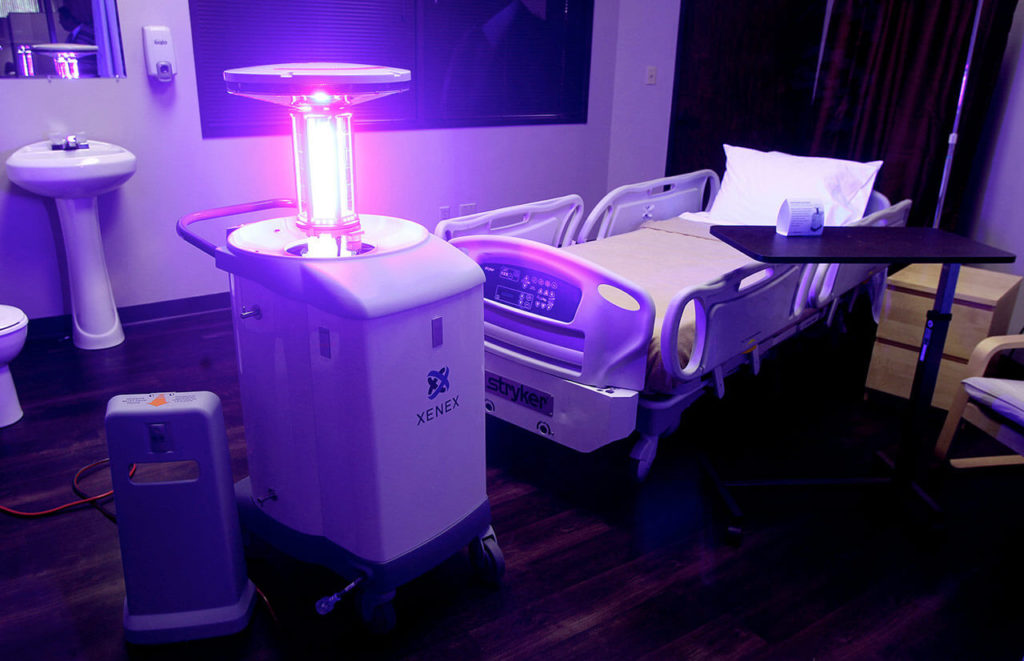
Although there are other advanced and effective technologies, such as hydrogen peroxide gas or mercury-based disinfection devices, the great advantage of Xenex is that it is a very clean and fast disinfection system, which does not leave chemical residue on surfaces. Although it is dangerous when the radiation is being carried out, so there can be no personnel in the room, it can be accessed immediately.
This system is not new for hospitals around the world, as it has already been of great help in other health emergencies such as MERS (Middle East Respiratory Syndrome), in 2012, or Ebola, in 2014.
Anecdotally, it should be noted that in (almost) all units where the robot is used on a regular basis, as is the case in ICUs, health workers are so familiar with it to the point of giving it a nickname or having renamed it and called it daily by name.
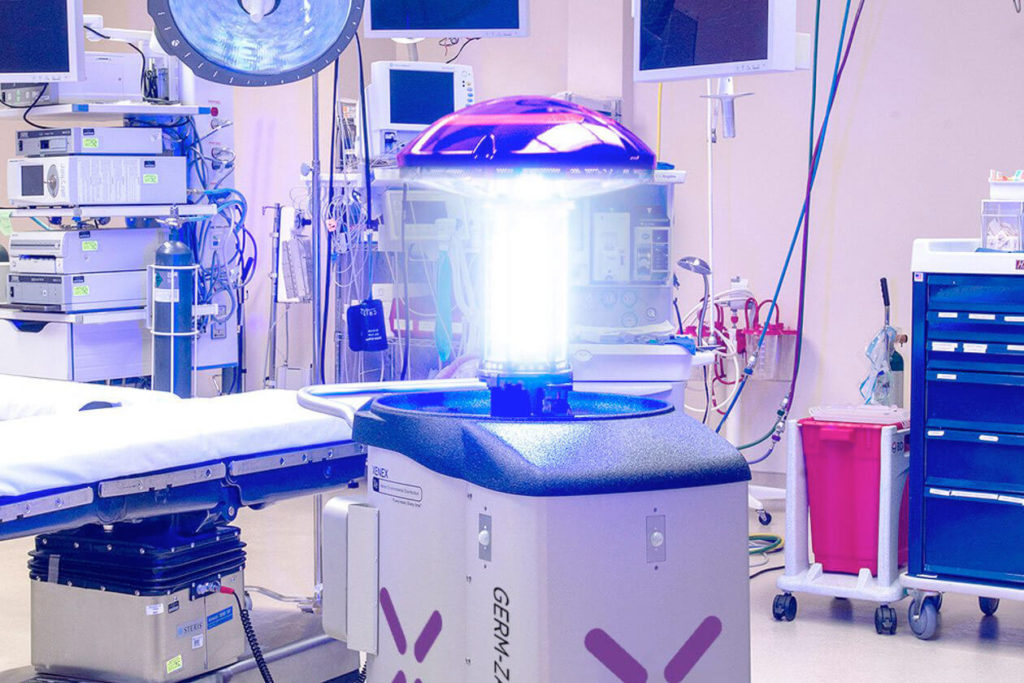
More cutting-edge robotic technology
In addition to Xenex, hospitals, especially in critical areas, have been progressively using devices that measure temperature, carry medicines and food, and interact with humans for months.
This is the case of Vici, a device similar to a tablet with wheels that has a screen, speaker and a microphone. This robot also has a stethoscope and allows basic tests such as temperature measurement, which has been a key element in the communication of doctors with patients.
In China, the Guangdong Provincial People’s Hospital opted for the use of robots capable of opening and closing doors and taking the elevator autonomously to deliver medicines to patients.
In a clinic in Munich (Germany), one of the most special guests is the robot Franzi. The reason? He cleans, speaks and sings in German to patients. The initiatives, how could it be otherwise, have come from all corners of the world. Like in Abuja, the capital of Nigeria, where a group of students created Mairobot, a machine to help hospitals treat COVID-19 patients remotely, taking temperatures, transporting medicines and allowing healthcare personnel to communicate with patients with a webcam and a screen.
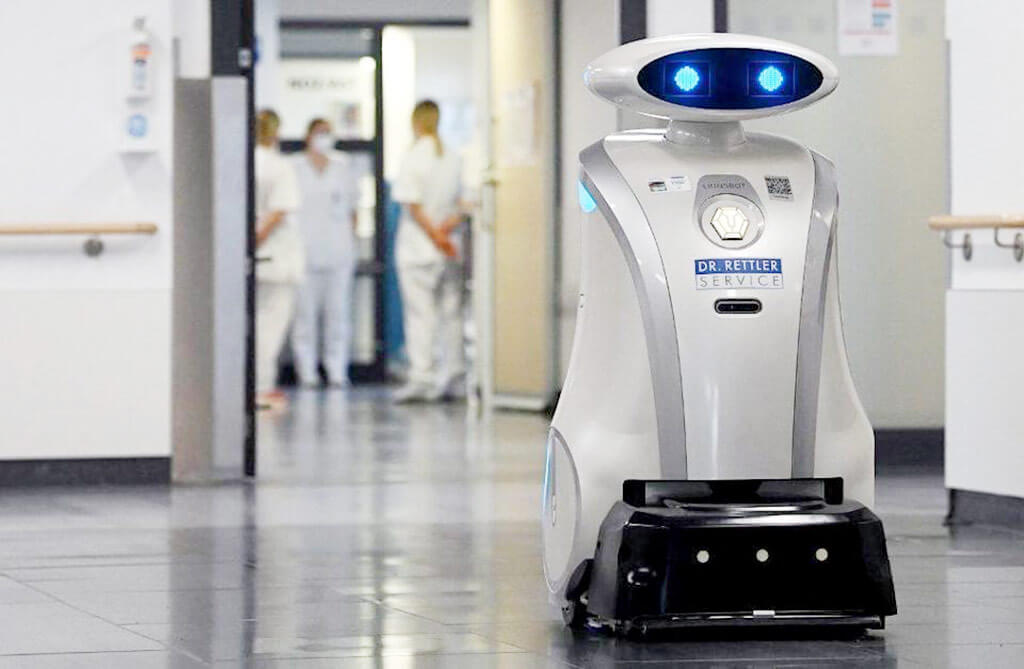
Robot ‘Franzi’ in München Klinik
“In short, and with the objective of avoiding mass contagion, robots are very valid and effective to test citizens, avoid contagions and detect possible diseases. In times of pandemic, COVID-19 disinfection technology is more relevant than ever.”


